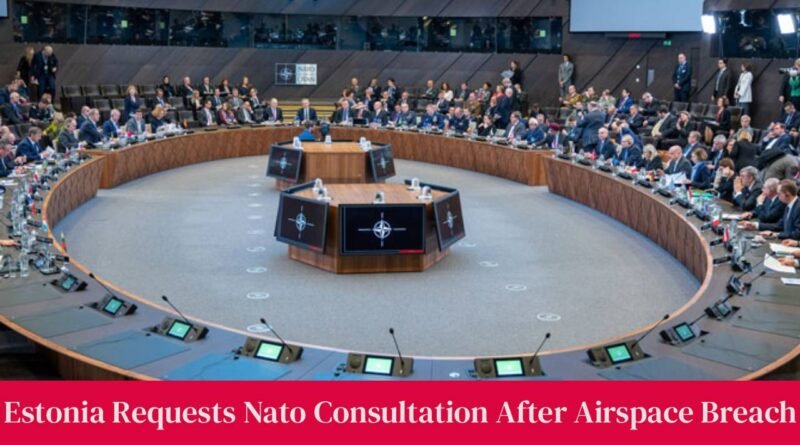Estonia Requests Nato Consultation After Airspace Breach
In a move underscoring the heightened tensions on Europe’s eastern frontier, the Republic of Estonia has formally requested a Nato consultation under Article 4 of the alliance’s founding treaty. This decisive action comes in direct response to a brazen incursion into Estonian sovereign airspace by three Russian MiG-31 fighter jets over the Gulf of Finland on Friday. The event marks a significant escalation in a pattern of provocative Russian military activity and tests the very principles of collective defense that underpin the North Atlantic Treaty Organization.
The incident, which Estonian officials have labeled a “clear and serious provocation,” saw the Russian military aircraft enter Estonian airspace without authorization, remaining there for approximately twelve minutes. Crucially, the jets were operating with their transponders switched off, had not filed any flight plans, and failed to establish any form of radio communication with Estonian air traffic control. This mode of operation is considered exceptionally dangerous and is typical of missions designed to test and probe defensive responses. The swift reaction of the NATO alliance was immediate; Finnish jets were first to intercept the aircraft over the Gulf, with Italian F-35 fighter jets, stationed in Estonia as part of NATO’s enhanced Baltic Air Policing mission, subsequently escorting them out of the area.
The decision to invoke Article 4 and call for a Nato consultation is not taken lightly. This clause of the NATO treaty is triggered when a member state believes its territorial integrity, political independence, or security is under threat. It formally initiates urgent consultations among all 32 allies to determine a unified response. This is the second such request in a single week, following a similar move by Poland after Russian drones breached its airspace. Estonian Prime Minister Kaja Kallas emphasized that the purpose of this Nato consultation is to ensure a shared situational awareness among allies and to agree on concrete, next steps. “A twelve-minute violation is a heavy violation of NATO airspace and needs a solid response on both a political and a practical level,” she stated.
The Russian defense ministry has denied any wrongdoing, claiming the jets were on a “scheduled flight over neutral Baltic waters” in strict compliance with international rules and did not come within 3km of Estonian territory. However, this narrative is firmly rejected by Estonia and its NATO partners, who possess objective monitoring data confirming the breach. This event is part of a broader, alarming pattern. Earlier in the week, both Poland and Romania reported similar violations by Russian drones originating from the war in Ukraine. In response to this cumulative pressure, NATO has already pledged to move additional military assets, including advanced fighter jets, eastward to fortify its defensive posture.
Estonian and allied leaders see these actions as a deliberate strategy by the Kremlin. As Estonian Ambassador to the US Kristjan Prikk noted, Russia has been attempting to test NATO’s resolve for some time. The objective appears to be twofold: to divert the alliance’s attention and resources away from supporting Ukraine by forcing a greater focus on the direct defense of NATO’s own borders, and to gauge the unity and speed of the Western response. The call for a Nato consultation is Estonia’s method of ensuring that the response is, indeed, united and strong. It transforms a bilateral provocation into a multilateral issue, reaffirming that an attack on one is an attack on all. As European Commission President Ursula von der Leyen asserted, “We will respond to every provocation with determination.” This latest Nato consultation serves as a critical forum to translate that determination into actionable, collective defense measures for the security of the entire alliance.
Go To Main Page

